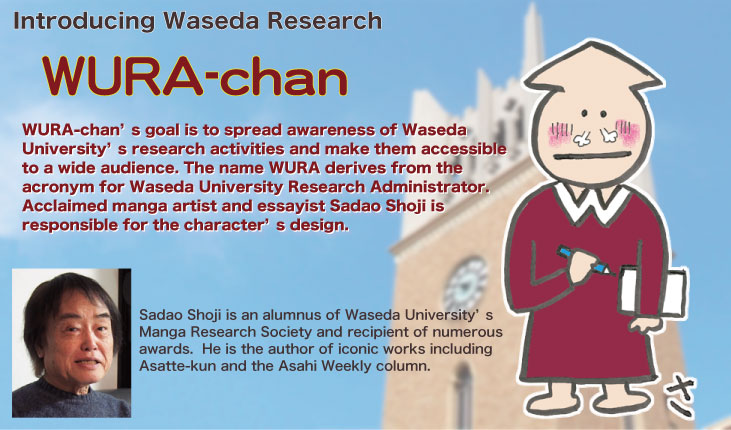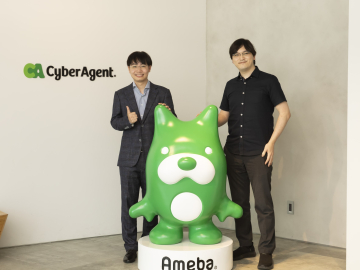Waseda University Research Administrator, WURA, is attending research-related events and introducing Waseda University’s research activities to the world.

Hello! My name is WURA!
I wish you all a happy new year and hope you stay connected with us in 2017. Today, I interviewed researchers involved in the “Waseda Shakespeare Festival” being held at Waseda University. The festival was held from October 14, 2016 to January 29, 2017, and more information is available at the Museum’s website.The Festival was held to commemorate the 400th anniversary of William Shakespeare’s death and is based on a research partnership(*1) formed in March 2015 between Waseda University’s Theatre Museum and Faculty of Letters, Arts and Sciences,and the University of Birmingham – home to the world renowned Shakespeare Institute.The goal of this partnership between Waseda, a hub for Japanese theatre, and the University of Birmingham, a hub for Shakespeare, is to promote a diverse range of Shakespeare research. This Festival is packed with activities that will surely excite theatre researchers and enthusiasts around the world.
For this volume of WURA Report, I visited the Tsubouchi Memorial Theatre Museum, host of one of the festival’s featured events, “Shakespeare Renaissance – from Shoyo to NINAGAWA,” to speak with Museum Director and Professor Minako Okamuro, Museum Vice Director and Professor Ryuichi Kodama, and Waseda’s leading Shakespeare researcher Professor Hiromi Fuyuki. During our conversations, I learned what the new partnership with the University of Birmingham means for the future of Waseda’s theatrical activities, as well as about the exciting events being held at the Festival.
*1: As part of its efforts to expand international research collaboration, Waseda University formed an organizational research partnership with the University of Birmingham in March 2015. This research partnership encompasses various fields including that of theatre and film research – primarily focused on Shakespeare – as well as sports science, robotics, and linguistics. The partnership will continue to expand into the future.
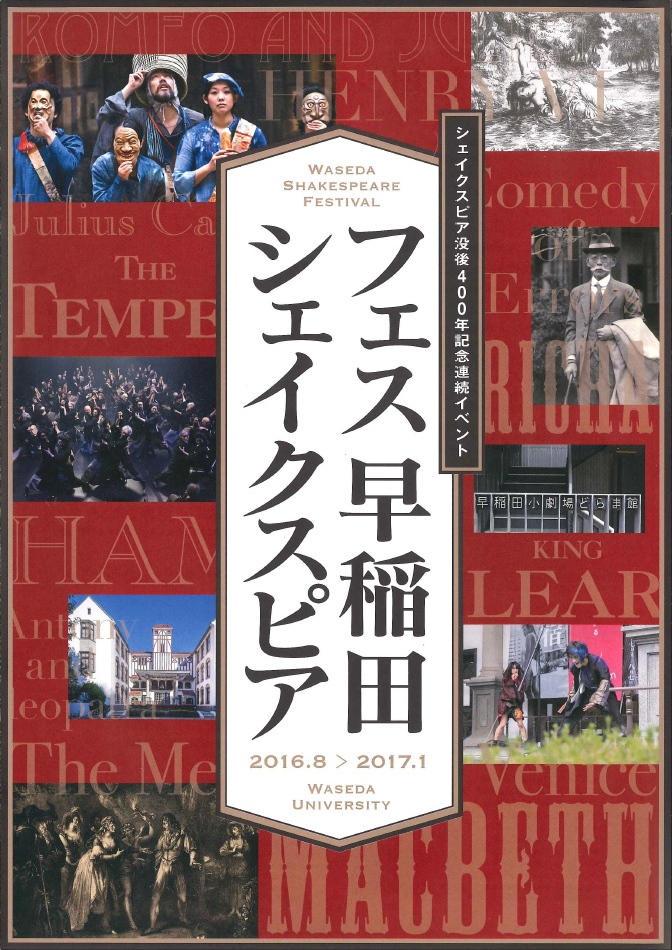
“Waseda Shakespeare Festival” Pamphlet
Professor Okamuro
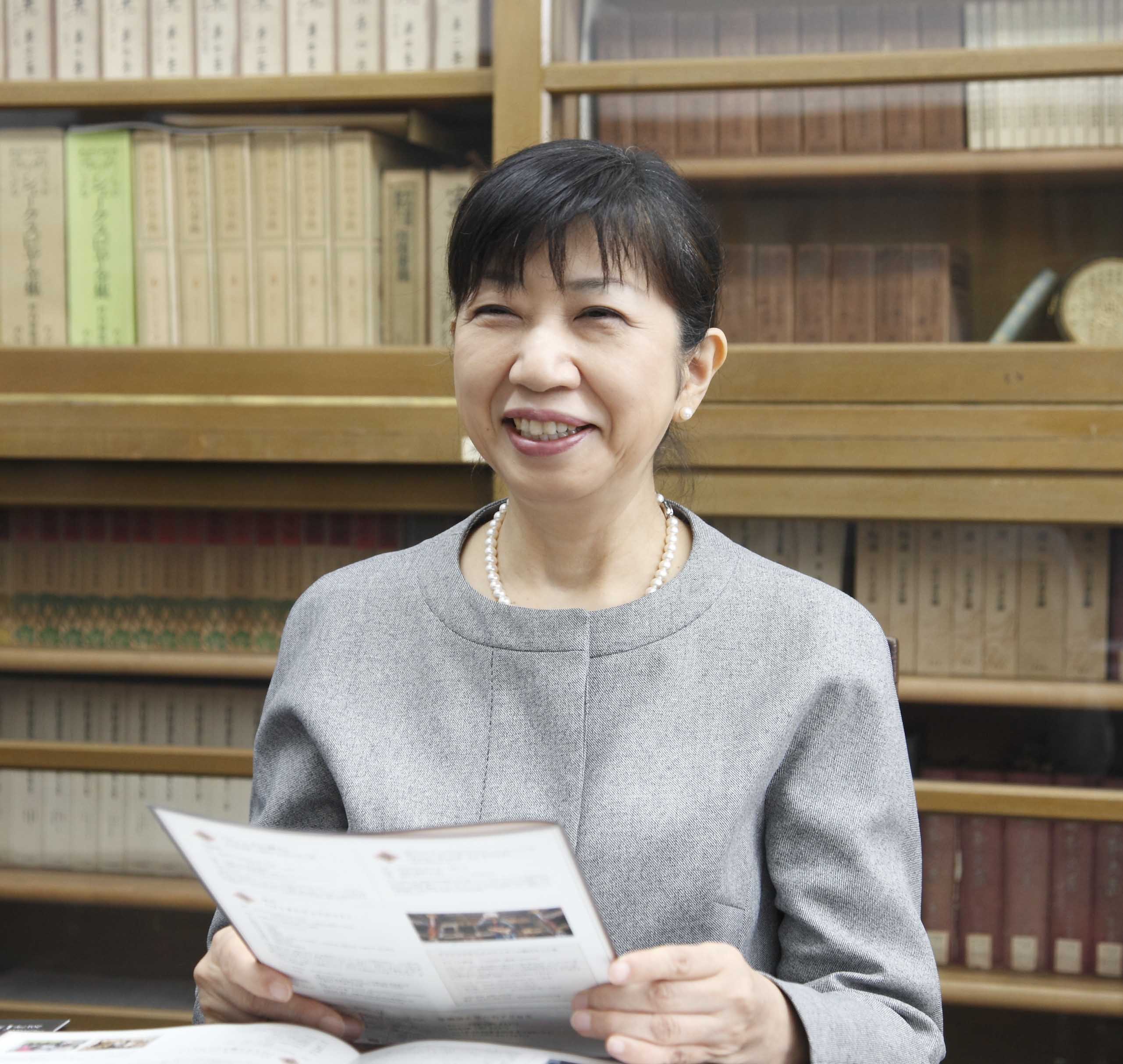
As part of this festival, the Tsubouchi Memorial Theatre Museum is hosting a special exhibition titled “Shakespeare Renaissance – from Shoyo to NINAGAWA,” as well as a wide range of events and lectures. In October, the Museum welcomed Kyōgen master Mansai Nomura to host a talk session titled “Kyōgen Meets Shakespeare.” The talk was a great success. The Festival, which is being held in cooperation with the Theatre Museum, is packed with great events, including a performance of the Chiten theatre company’s unique interpretation of “Romeo and Juliet” in late January at the Okuma Auditorium. “Kukangendai,” a band with members from Waseda University, will also give a live performance. Visitors can also view performances put on by student theatrical troupes at the student-run Dramakan Theatre. These events are great opportunities for people from all walks of life to experience Shakespeare and learn about the ties that bind Waseda to the legendary English playwright.
The Tsubouchi Memorial Theatre Museum is not only a museum that houses precious historical treasures, but also an international research hub for theatre and film. The partnership with the University of Birmingham and the Shakespeare Institute will further enhance collaboration and sharing of information between researchers, opening opportunities for joint research initiatives and enabling the Museum to further enhance its contributions to the international research community. One example is an international conference held January 21-22 titled “Shakespeare.Film.East.West.” that featured Professor Martin and Professor Fuyuki from the Faculty of Letters, Arts and Sciences. The conference was organized by faculty and young researchers from within and outside the universities. As the first academic conference of its kind, this event was of great significance to the research community.
Japanese performances of Shakespeare have garnered attention and praise around the word. Japanese Shakespeare performances and research has the power to reach international audiences and create a “new” type of Shakespearean performance. The Tsubouchi Memorial Theatre Museum houses a tremendous amount of historical treasures and I hope people from around the world will come here to research and learn.
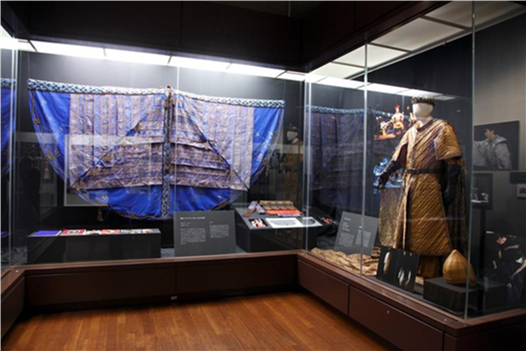
From the “Shakespeare Renaissance – from Shoyo to NINAGAWA” exhibition: Outfits designed by Emi Wada used in the Shakespeare film adaption “Prospero’s Books” (Directed by Peter Greenaway, 1991) and the Opera “Macbeth” (Produced by Hideki Noda, 2004) *Pictured on the left is Emi Wada’s collection and on the right the New National Theatre collection.
 I had a great time visiting the Tsubouchi Memorial Theatre Museum’s “Shakespeare Renaissance – from Shoyo to NINAGAWA” exhibition. There, I had the chance to not only come into contact with historical documents, but also audio, video, and even a 3D video of Shōyō. Waseda is an environment that cultivates new performance styles and promotes them across the world. The Tsubouchi Memorial Theatre Museum is an incredibly valuable resource for researchers, and I have no doubt that students and researchers alike will take advantage of this opportunity to come to Waseda and experience Japanese culture – all while discovering a “new” type of Shakespeare.
I had a great time visiting the Tsubouchi Memorial Theatre Museum’s “Shakespeare Renaissance – from Shoyo to NINAGAWA” exhibition. There, I had the chance to not only come into contact with historical documents, but also audio, video, and even a 3D video of Shōyō. Waseda is an environment that cultivates new performance styles and promotes them across the world. The Tsubouchi Memorial Theatre Museum is an incredibly valuable resource for researchers, and I have no doubt that students and researchers alike will take advantage of this opportunity to come to Waseda and experience Japanese culture – all while discovering a “new” type of Shakespeare.
Professor Kodama
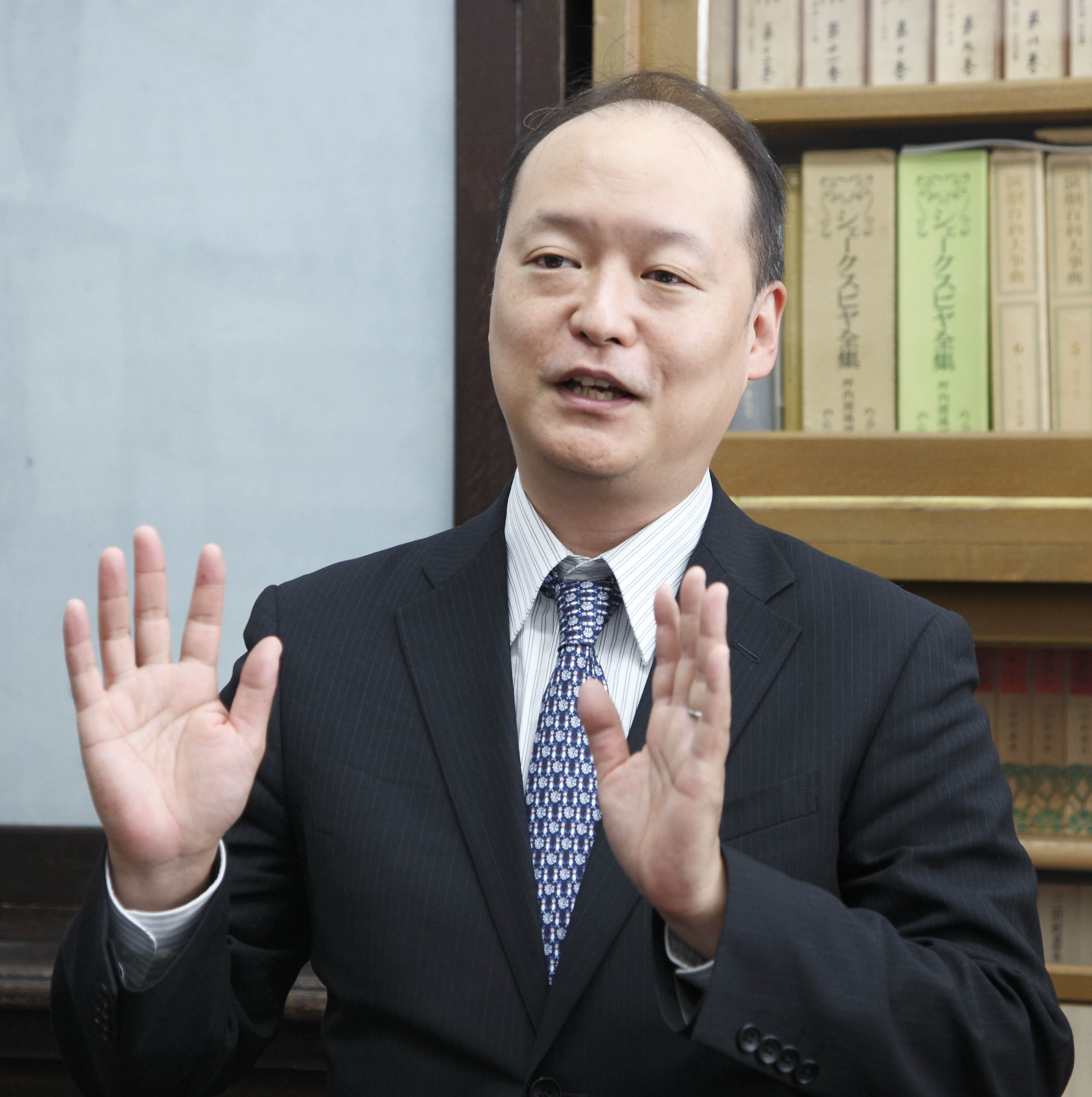
The history between Waseda and Shakespeare starts with the late Tsubouchi Shōyō, a professor at Waseda, and a historically renowned author, critic, playwright, and translator. In 1928, Shōyō completed a 40-volume translation of the “Complete works of Shakespeare,” the first translation of its kind in Japan. To commemorate this accomplishment, Waseda University established the Tsubouchi Memorial Theatre Museum, inscribing Shakespeare and Shōyō’s translations into Waseda University history.
The only individual after Tsubouchi Shōyō to complete a full translation of Shakespeare’s works is Yushi Odashima. Therefore, we know that Shōyō was a pioneer in this regard. While referencing documents and other materials, Shōyō set out to establish a new type of theatre based on the works of Shakespeare. This can be seen in the quintessential and lively kabuki program “Kirihitoha,” which depicts the Seige of Osaka and was influenced by Shakespearean theatre history. The translations of Shōyō and Odashima, as well as the productions of Yukio Ninagawa, experiment with Shakespearean works. Kabuki, bunraku, kyōgen, and commercial theatre are significant within the context of Shakespearean performances, and the Theatre Museum houses many historical materials related to these styles.
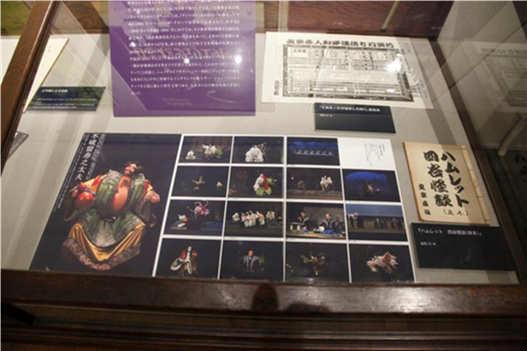
From the “Shakespeare Renaissance – from Shoyo to NINAGAWA” exhibition: Documents related to Japanese bunraku (puppet theatre) interpretations of Shakespeare’s “Hamlet” and “Falstaff”
 Waseda University served as the stage for Shōyō’s accomplishments and inherited the legacy he set forth nearly a century ago. One only needs to pass by the exquisite building on Waseda campus that houses this Museum as well as the nearby Dramakan Theatre, where student theatrical troupes hold performances throughout the year, to understand the deep history and significance of theatre at Waseda.
Waseda University served as the stage for Shōyō’s accomplishments and inherited the legacy he set forth nearly a century ago. One only needs to pass by the exquisite building on Waseda campus that houses this Museum as well as the nearby Dramakan Theatre, where student theatrical troupes hold performances throughout the year, to understand the deep history and significance of theatre at Waseda.
Professor Fuyuki
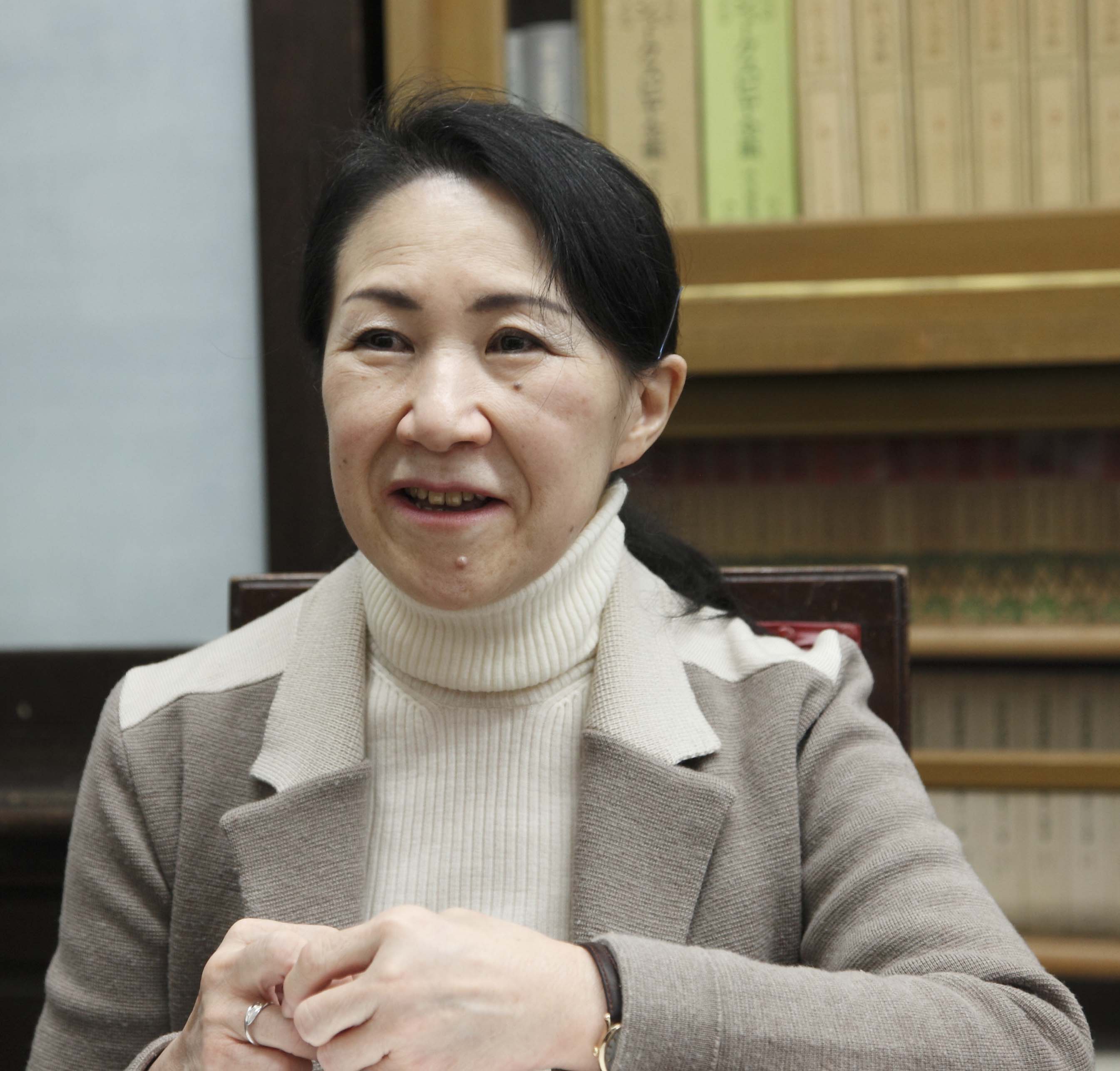
There are many Shakespeareans who conduct various research in Japan.One of the main features of my research is to connect textual criticism and performance closely, with the benefit of the documents housed in the Tsubouchi Memorial Theatre Museum.I believe Shakespearean visual performances are inextricably linked to research of Shakespearean texts, and for this reason, I carry out my work based on the motto: “To link page to text.”
The first time I was inspired to research Shakespeare was when I saw a performance of a history play at a small theatre in Shibuya. The performance featured young actors whose rapid manners of speaking oozed with energy, and I was struck by how the words of the characters pierced my soul. Some find it difficult to be moved by the lines in his historical plays, but this performance effectively appealed to modern audiences, representing the disastrous cycle of the history plays that are linked to the current world.
Despite the distance and time that separates us from Shakespeare’s era, the words spoken in his performances are close to our hearts and have the ability to surprise us when we least expect. Because there is no stage direction or empty moments in the performance, the words excite the imagination of audience members and readers. This is one of the reasons why the performances inspire various interpretations around the world, regardless of country or time period. In other words, it is the confusion and contradictions one finds in Shakespeare’s works that lures us in as audience members.
Presently, Japanese Shakespeare, including theatre research, is not simply imitating Shakespeare in Europe, but transmitting its own unique interpretations to the world. Japanese Shakespeareans including many young researchers, actively join conferences or publish articles,and propose new interpretations based on Japanese culture and history around the world. In terms of performances, Ninagawa’s productions have been highly praised throughout Europe. I believe this illustrates how Japanese interpretations of Shakespeare are now being recognized for their unique value.
With the research partnership with the University of Birmingham, I believe Waseda University not only has the potential to promote current research, but produce new research as well. I intend to continue working hard to promote Shakespeare research in Japan by creating opportunities for exchange, hosting events, and sharing resources.
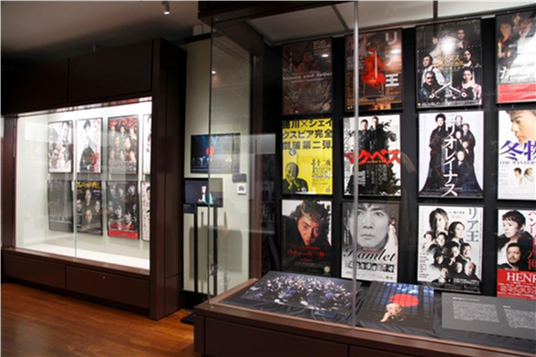
From the “Shakespeare Renaissance – from Shoyo to NINAGAWA” exhibition: Promotional posters for Yukio Ninagawa productions of Shakespearean works. This type of exhibition is the first of its kind in Japan.

Perhaps what makes Shakespeare so appealing is how our everyday lives are projected in the authenticity of his words. After speaking with Professor Fuyuki, I now want to learn more about Shakespeare. The knowledge of these three professors, which is the accumulation of years of hard research, was exemplified at the “Waseda Shakespeare Festival.”
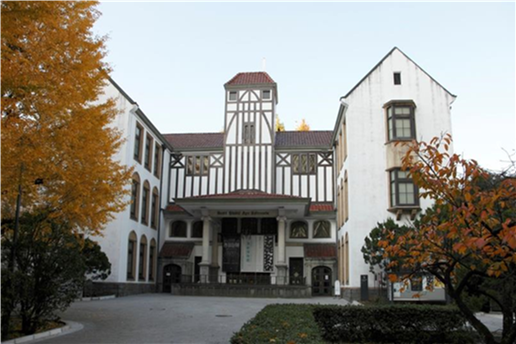
From the “Shakespeare Renaissance – from Shoyo to NINAGAWA” exhibition: Promotional posters for Yukio Ninagawa productions of Shakespearean works. This type of exhibition is the first of its kind in Japan.
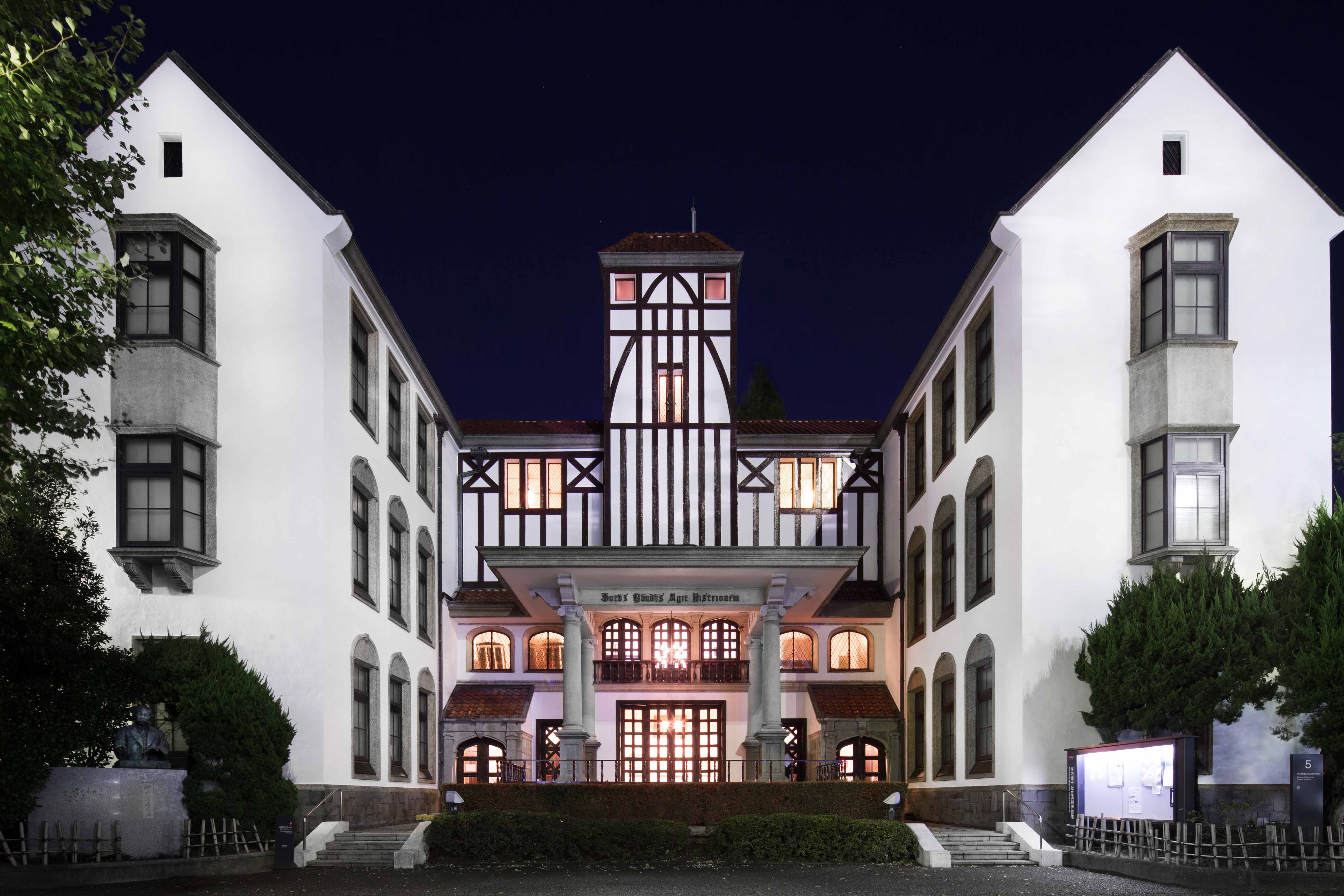
Outside the Waseda University Tsubouchi Memorial Theatre Museum
Starting with Tsubouchi Shōyō, the Museum houses a plethora of valuable historical resources associated with theatre from around the world. It is an international research hub for theatre and film.

